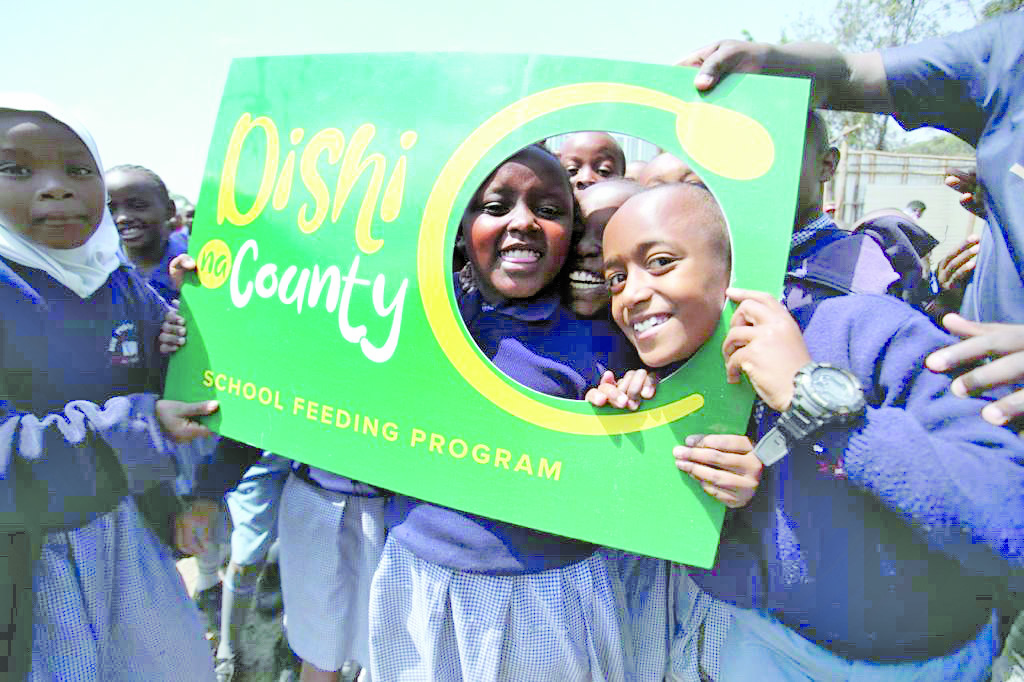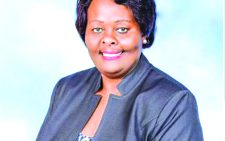Hits and misses of Sakaja school feeding initiative

Late in August, the Nairobi County government launched an ambitious school feeding programme that aims to provide nutritious meals to more than 250,000 learners in public primary schools and early childhood development centres.
Governor Johnson Sakaja is the brainchild behind the programme dubbed Dishi na County.
He said the programme aims to improve the health and education outcomes of the children in his county adding that it will not only feed the children, but also boost their enrollment, attendance, performance, and transition to the next level. Each child gets the meals at a subsidized rate of Sh5 a day.
To address the logistical challenges, Sakaja decided to roll out the programme in phases where the first phase targeted 28 schools.
This would also allow the county government to address any arising challenges before starting the next phase.
The Governor hopes that the programme will cover all public schools in Nairobi when the learning resumes in 2024.
The food was to be prepared in 10 kitchens whose construction had been started earlier in June.
He also hired some parents from the respective schools on contract to work in the kitchens as cooks.
“The programme will ensure the provision of a daily nutritionally balanced hot meal for all children in public primary schools and public early childhood development centres,” Sakaja said at the launch of the programme.
In July, Sakaja signed a three-year intergovernmental partnership agreement on the implementation of the programme with the Education Cabinet Secretary Ezekiel Machogu and witnessed by his National Treasury counterpart Njuguna Ndung’u.
The kitchens are located in Njiru, Toi, Roysambu, Bidii, Kwa Njenga, Racecourse, Baba Dogo, Farasi Lane, Muthangari and Kayole One Primary Schools and target children in Makadara, Starehe, Roysambu, Ruaraka, Dagoretti North, Embakasi Central, Westlands, Embakasi South, Kasarani and Kibra subcounties.
“These are centralized kitchens (hub) with a capacity to cook 10,000 meals a day. The first meals were served at the beginning of third term on 28th August 2023. About 80,000 meals were served daily,” the county government said.
It added: “All the 10 kitchens are now completed and were handed over to the county. This will increase the number of children served in the first term of 2024 to 180,000 meals daily. Procurement for other kitchens is ongoing. Once they are completed and operational 250,000 students will get a meal daily.”
Procurement of kitchens in phase two of the programme is underway in six schools.
They include Uhuru Gardens, Dandora 1, Donholm, Umoja 1 and Kimathi Primary schools to feed schools in Langata, Embakasi North, Embakasi East, Embakasi West, Mathare and Kamukunji subcounty respectively.
Five shillings
Sakaja’s administration also established a digital platform Tap2Eat for parents and guardians to pay the daily lunch charges via mobile phone money transfers services for the programme that the county government has committed an annual budget of Sh1.7 billion for the next five years.
“In this financial year the budget set aside is Sh1.7 billion. Sh1.2 billion will go towards subsidizing the meals and Sh500 million towards building the remaining kitchens. Parents pay Sh5 and the rest is subsidized by the county and implementing partner,” NCG said.
To distribute the meals, he onboarded an Industrial Area-based company, Food4Education to transport food from the kitchens to the schools.
In a typical day, food is already packed and ready for transportation by 10am while the trucks are expected to arrive at the schools before lunch at around 12.30pm.
Sakaja hailed the programme saying the centralized procurement of food is cheaper since it is bought in bulk with efficiencies in economies of scale and enhanced inventory control and management.
Meals safety
Additionally, food preparation is conducted under standard operating procedures for every activity ensuring quality control at every stage as well as ensuring efficient use of the human resource to produce food in large quantities.
“Batching and tracking of meals can be done from a pot in a central kitchen to an individual beneficiary to monitor any possible contamination. The programme assures standardized meals with ingredients to give the required amount of nutrients for every learner,” the Governor explained.
On safety of the meals, Sakaja said the food is monitored at each critical point from procurement, storage, cooking, transportation and service which has helped to reduce food wastage as a standard quantity of meals is prepared for a known number of learners each day.
The county government anticipates that due the programme the enrollment in public schools will increase in the new year, help to reduce dropout and absenteeism rate, and boost academic performance and health status of the children especially from poor families.
During the four months when the programme has been running, it has not encountered drawbacks hence has received positive feedback beneficiaries.
The children are assured of hot, quality and balanced diet in school every day while the parents welcomed the programme for reducing their financial burden as some schools were charging them as high as Sh2,000 per month for food.
The feeding programme has not been without criticism.
Ridiculous
One month after its launch, there erupted an online war of words pitting the Governor and Embakasi South MP Babu Owino who claimed that the project was a scandal in waiting.
Owino said each public school should have its own kitchen, saying the ratio of kitchens to children was “ridiculous” meaning that the 10 kitchens are too few compared to the learners’ population.
In his response, Sakaja dismissed the claims terming them as propaganda by his detractors who were using the plight of vulnerable children for their selfish political gain.
“Let me tell them; Watoi Wadishi, Washibe, Wasome, Wanone. Lazima iWork (Dishi na County),” Sakaja said











